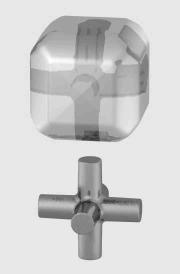
Photo from wikipedia
Cinnamaldehyde (CAD) has various applications in foods and pharmaceuticals and has gained prominence as a potent nematicide in agricultural research owing to its nematicidal activity. However, conventional methods of CAD… Click to show full abstract
Cinnamaldehyde (CAD) has various applications in foods and pharmaceuticals and has gained prominence as a potent nematicide in agricultural research owing to its nematicidal activity. However, conventional methods of CAD production, including extraction from plants or organic chemical synthesis, are environmentally hazardous and limit its utilization for downstream applications. Here, we engineered Corynebacterium glutamicum as a whole-cell biocatalyst for the efficient bioconversion of trans-cinnamic acid (t-CA) into CAD. An expression module of Mycobacterium phlei carboxylic acid reductase was constructed for the conversion of t-CA to CAD. Additionally, the putative dehydrogenase-related genes (dkgA, adhC, and cg1176) responsible for the conversion of CAD to cinnamyl alcohol were deleted from the engineered C. glutamicum strain to prevent the loss of CAD. Furthermore, as the conversion is NADPH-dependent, we investigated the conversion efficiency by exchanging the putative promoter region for the zwf gene, which encodes glucose-6-phosphate dehydrogenase, with a strong promoter to increase the NADPH pool. Finally, a bioconversion platform using C. glutamicum as a whole-cell biocatalyst was developed by deleting the vdh gene, which is involved in the reverse conversion of CAD to t-CA. Taken together, a 100% conversion yield of 1.1 g/L CAD from 1.2 g/L t-CA was obtained within 30 min.
Journal Title: Journal of agricultural and food chemistry
Year Published: 2022
Link to full text (if available)
Share on Social Media: Sign Up to like & get
recommendations!